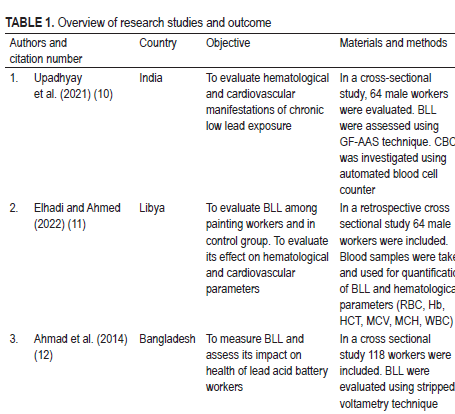The role of laboratory diagnostics in the assessment of occupational lead exposure
DOI:
https://doi.org/10.17532/jhs.2023.2623Keywords:
lead, occupational exposure, laboratory diagnostics, biomarkersAbstract
Introduction: Industrialization and urbanization led to a significant increase in the environment. Lead inhibits the activity of numerous enzymes, triggers oxidative stress, and causes protein biosynthesis dysregulation. Inhalation of lead particles is the most common route of intoxication associated with occupational exposure. This study aims to evaluate laboratory methods and biomarkers in the assessment of lead exposure.
Methods: For non-experimental qualitative research, available scientific articles in English published in the relevant databases (MEDLINE and ScienceDirect) were used. The database search was performed using the keywords “Laboratory diagnostics”, “occupational exposure”, and “lead”.
Results: Atomic absorption spectrometry (AAS) is the gold standard in laboratory monitoring of occupational lead exposure. Inductively coupled plasma with mass spectrometry is a commonly used method described as more sensitive than AAS due to its low detection limit. Lead concentrations can be determined in various samples, but blood and urine are the most commonly used in laboratory practice. The most important exposure biomarker is the enzyme δ-aminolevulinic acid dehydratase (ALAD) in the blood, which is characterized by progressive inactivation by lead and a negative correlation with its concentration. The concentration of urinary delta-aminolevulinic acid (δ-ALA-U) reflects the state of impaired enzyme function in heme biosynthesis. In addition, determining blood zinc protoporphyrin and urinary coproporphyrin levels significantly aids in assessing occupational lead exposure disorders.
Conclusion: The availability of the laboratory methods used and the biomarker specificity and sensitivity play an important role in the adequacy of lead exposure monitoring. Accurate determination of ALAD and δ-ALA-U concentrations, along with other biomarkers, is critical for assessing individuals exposed to lead.
Downloads

Downloads
Published
License
Copyright (c) 2024 Amela Ibišević, Emsel Papić, Lejla Čano Dedić, Sabina Šečić, Sabina Šegalo

This work is licensed under a Creative Commons Attribution 4.0 International License.










